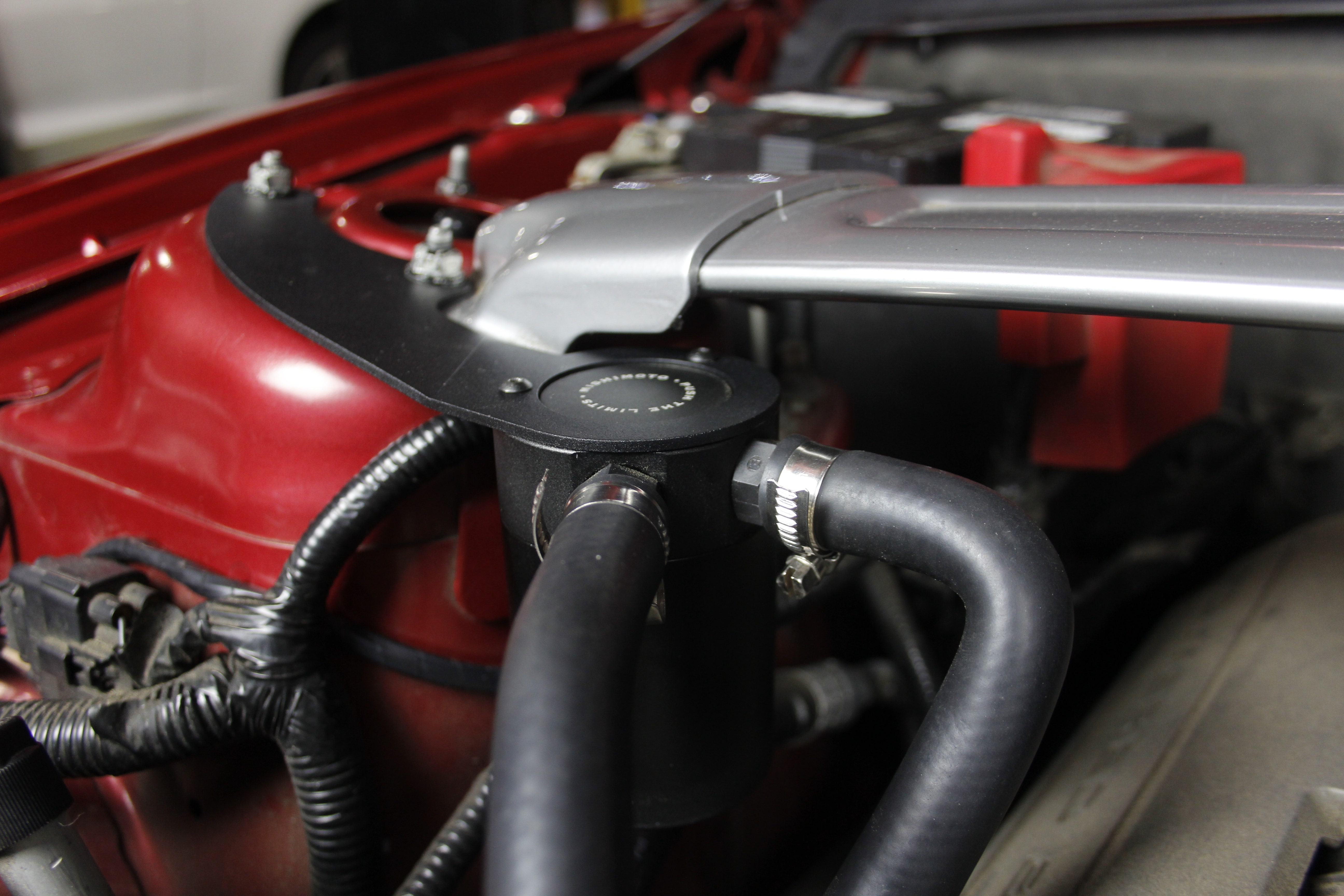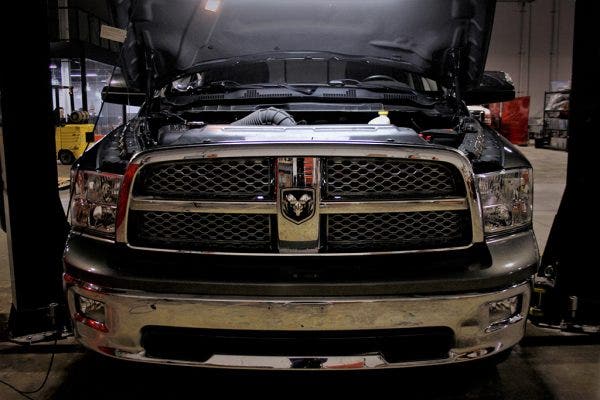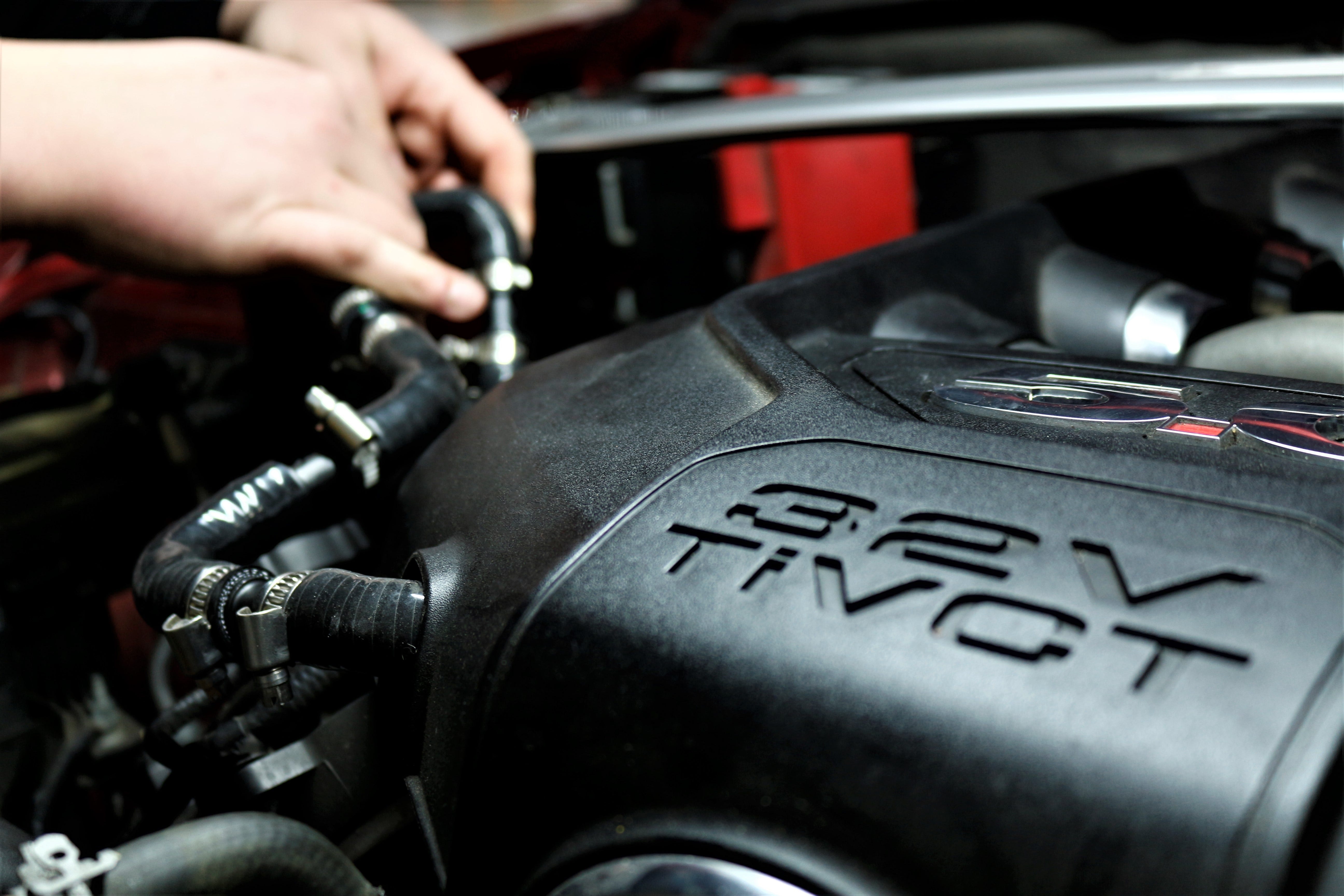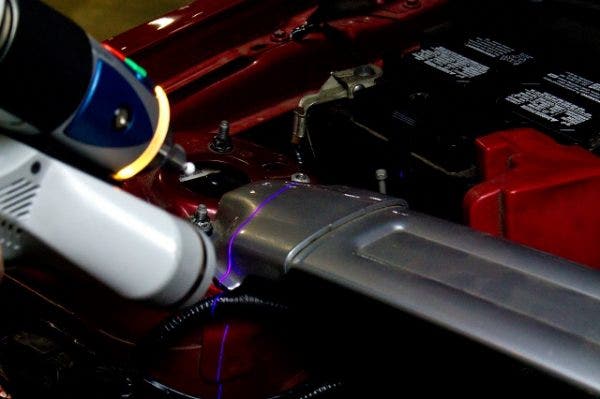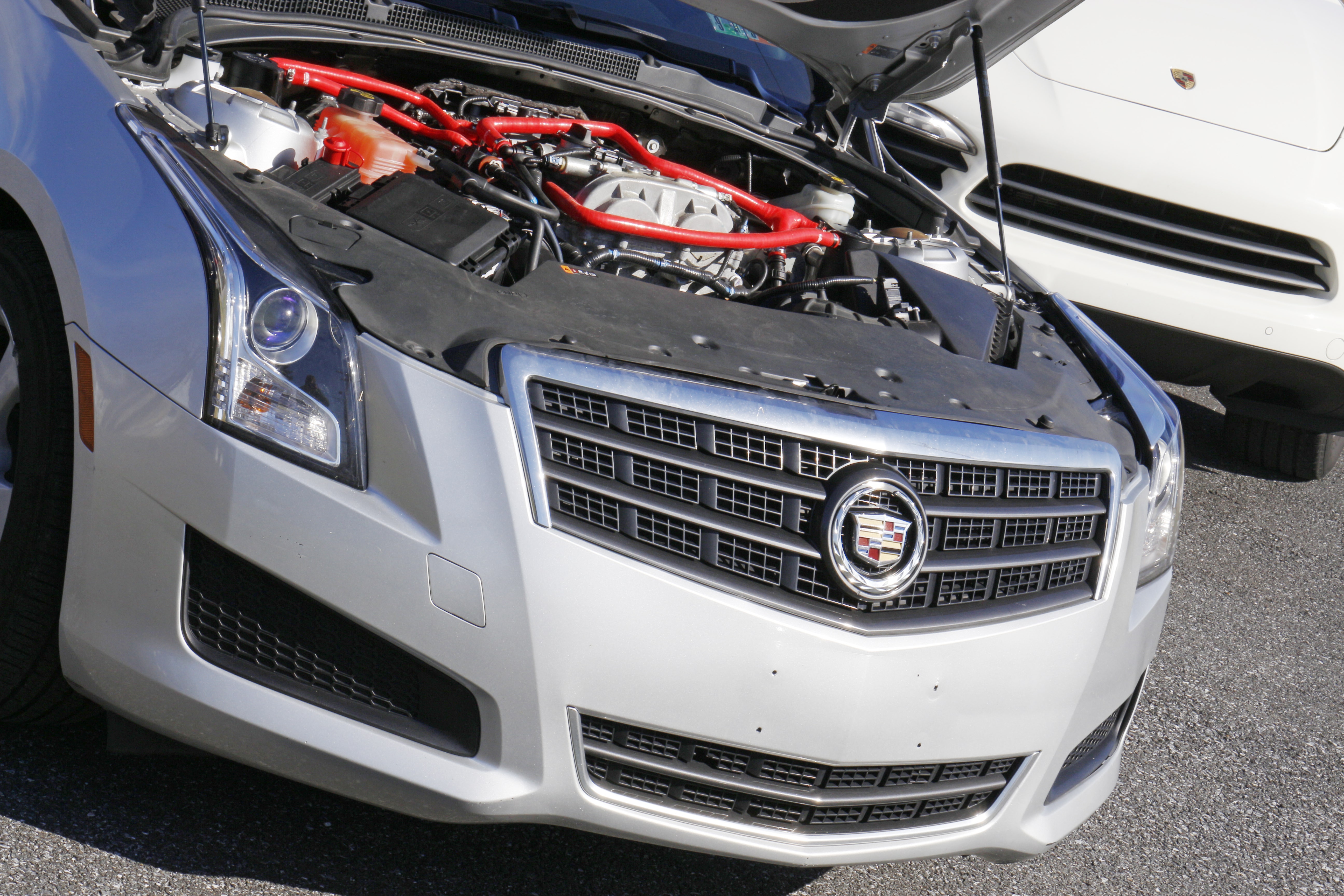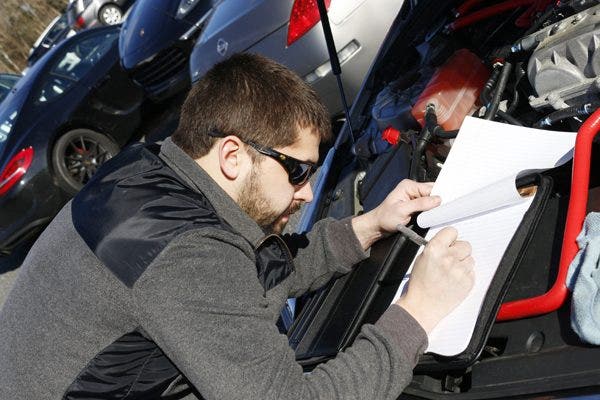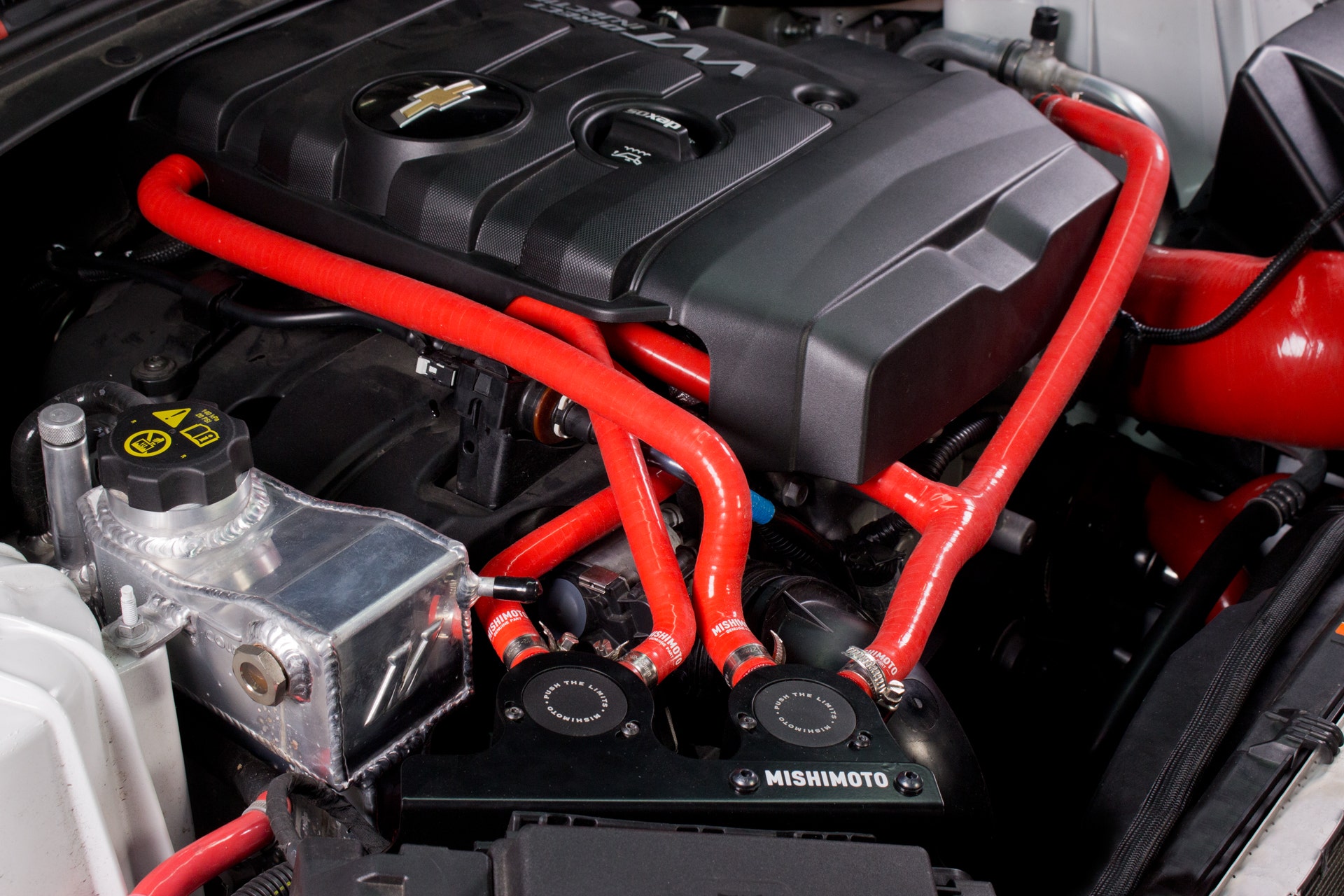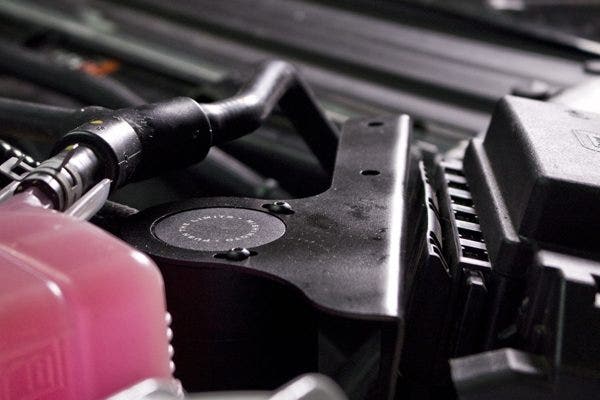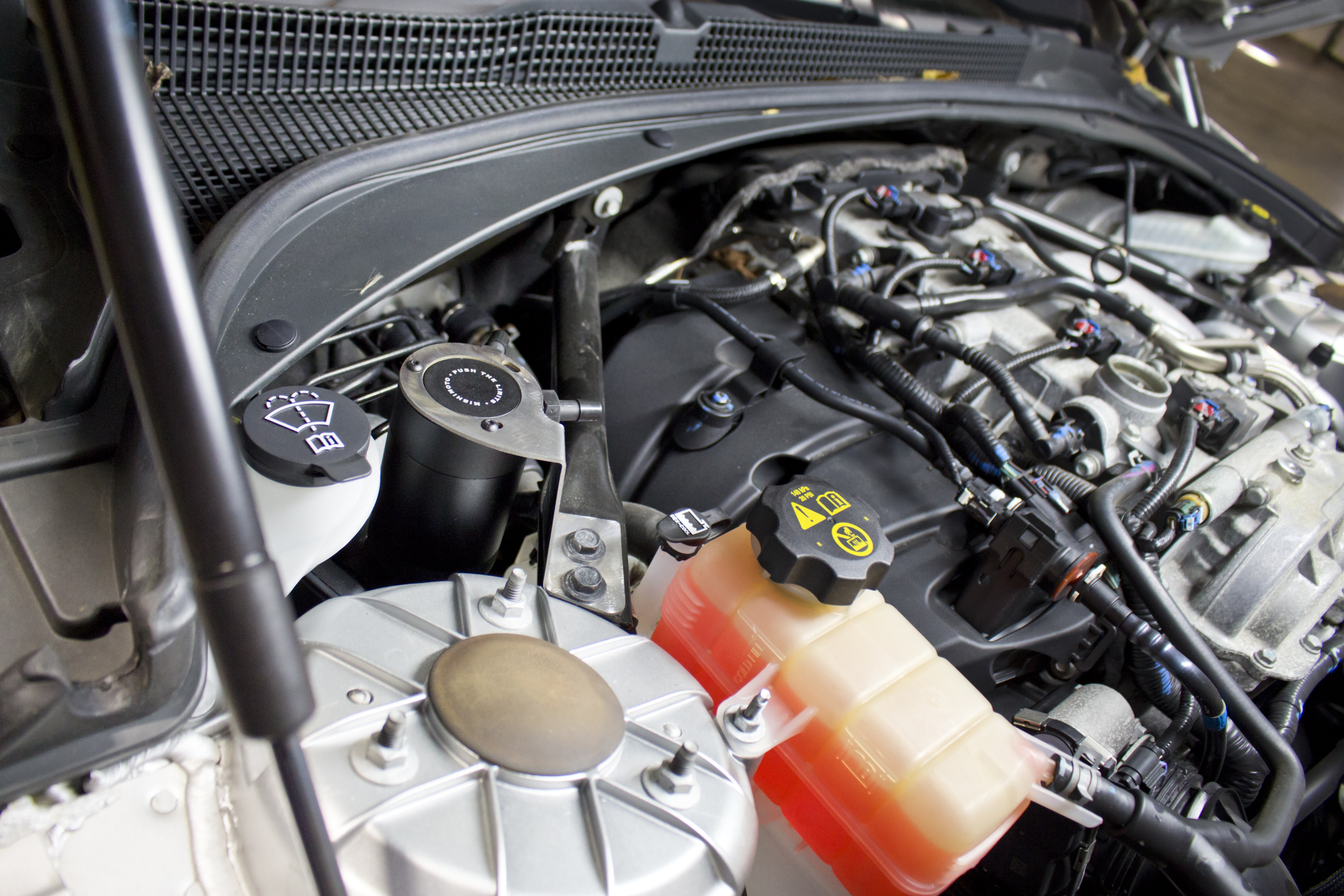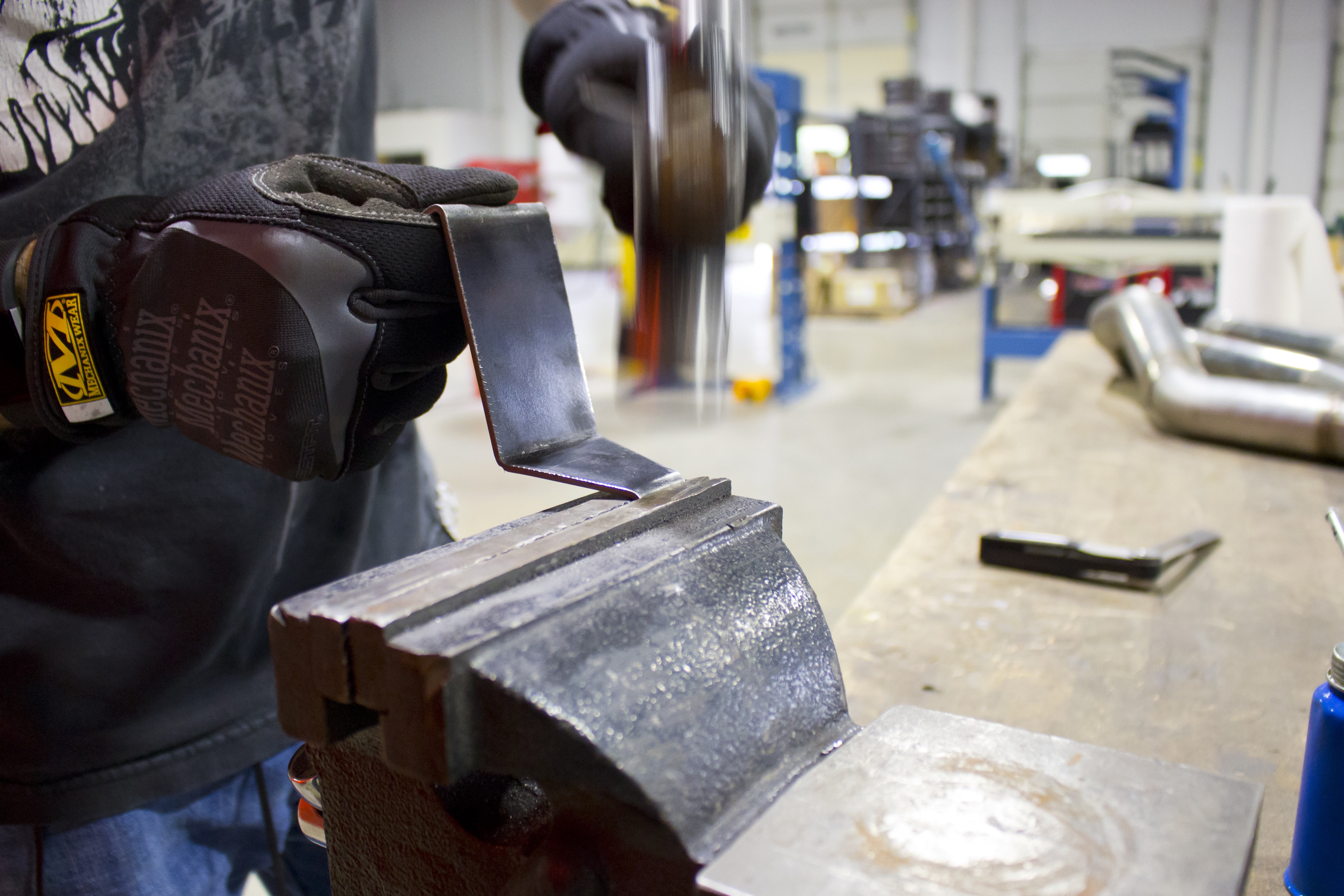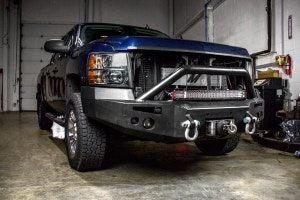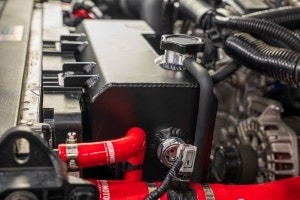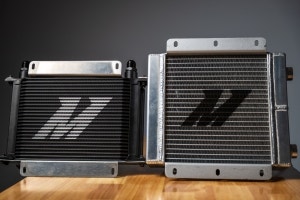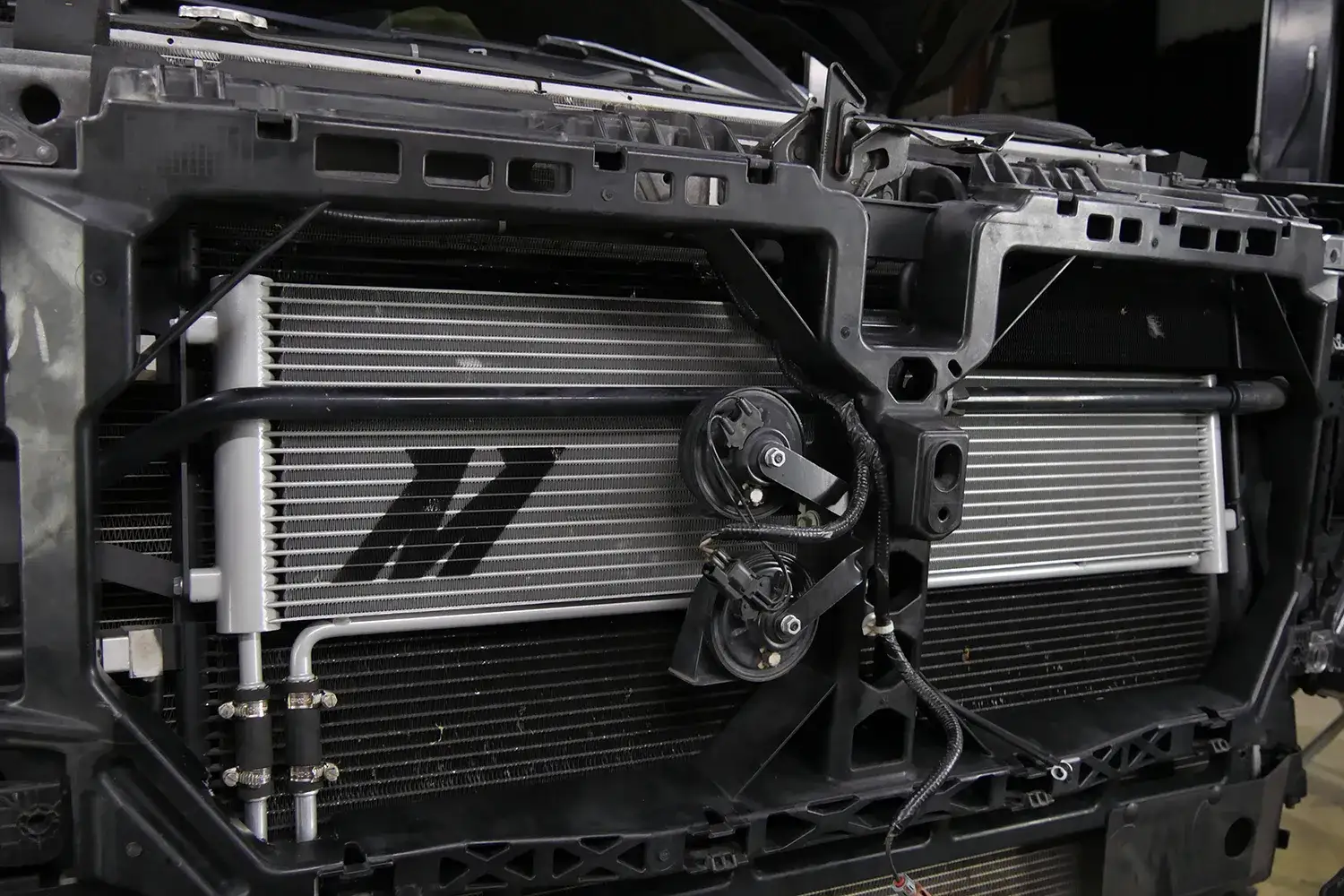The prototype has been on our loaner GT for the past few months, working as it should and catching a nice amount of blow-by. The previous updates, covered how we used innovative tech to design and create the bracket, and the planned routing for the lines. Significant progress has been made since then, as the designs have taken a cleaner physical form.

Side shot of the completed kit
Our sample production kit arrived at our R&D headquarters and it couldn't have fit any better. Everything was spot on and the installation was easy. You can see in the above image that we've cleaned up the catch can lines with properly routed hoses. The line material is rubber based, retaining a clean, OEM look.
To keep this
